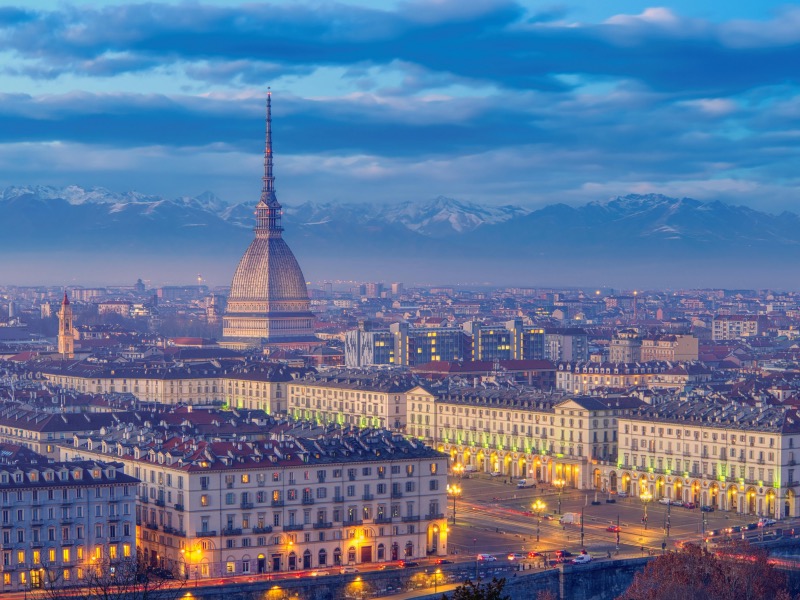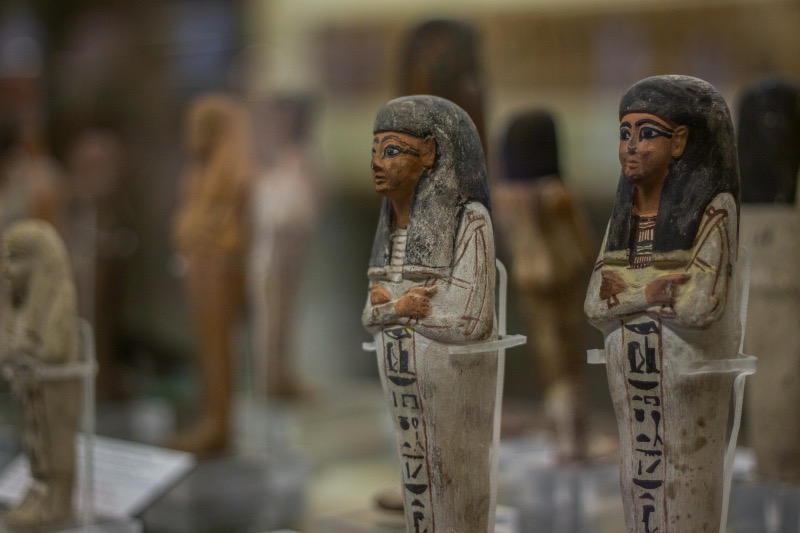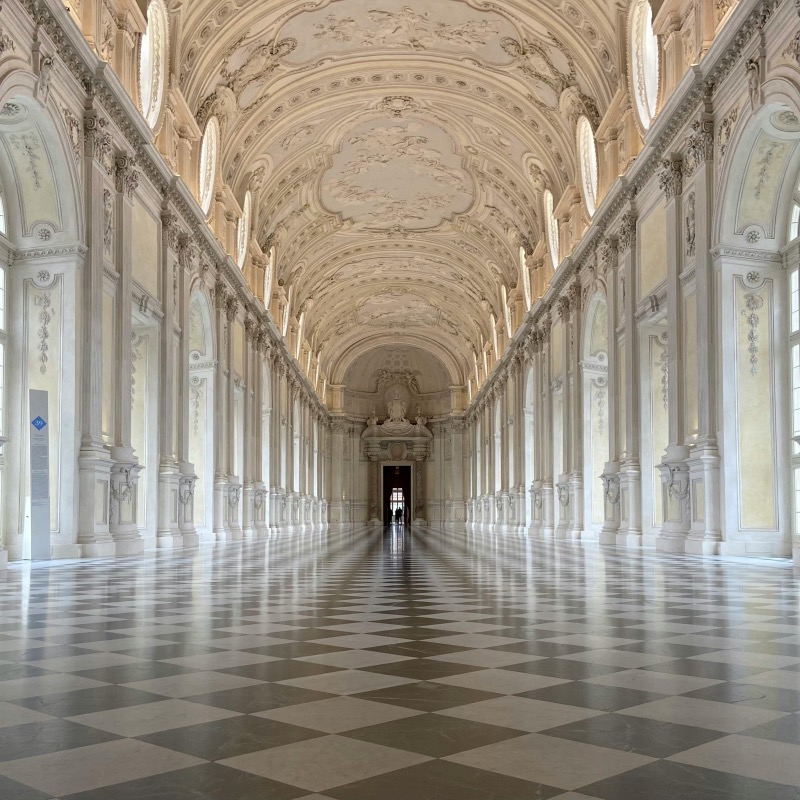
Turin, the capital of Piedmont, is a city steeped in history with a drive towards modernity. The former capital of Italy and cradle of the Savoy royal family, Turin is also recognised as an important industrial hub and centre of good taste, known for its production of vermouth and other delicacies. With its elegant urban fabric and numerous cultural legacies, Turin offers a variety of sights to see that tell stories of the past and beyond. If you are planning a multi-day visit, consider exploring Turin’s museums by first purchasing a pass that gives you access to the main museums, in fact, as well as favourable discounts for temporary exhibitions and a reduced ticket to climb the Mole Antonelliana.

Museo Egizio Torino
What to know about Turin’s main museums
From archaeological collections to masterpieces of modern art, through the history of cinema and the grandeur of royal residences, every museum in Turin offers something special for every type of visitor. There are also several fun museums, suitable for families with children.
Egyptian Museum in Turin
The Egyptian Museum in Turin, located in Via Accademia delle Scienze, is the oldest museum in the world devoted entirely to Egyptology and the second largest only to the Cairo museum. Founded in 1824 thanks to the passion of King Charles Felix, the museum houses a vast and impressive collection that includes over 30,000 objects that tell the story, religion and everyday life of ancient Egypt.
Among the most significant works, the Tomb of Kha and the Statue of Ramesses II dominate the scene, making the museum a must-see for fans of ancient history and archaeology.
It is one of the most visited museums, which is why, especially if you plan to access it at the weekend, I recommend buying Egyptian Museum tickets in advance.
National Cinema Museum and Mole Antonelliana
The Mole Antonelliana, an iconic symbol of Turin, is not only one of the tallest structures in Italy but also houses the National Museum of Cinema. This museum, one of the most visited in Italy, winds its way through the various floors of the Mole. The exhibition offers an overview of the history of cinema from its origins to the digital era and includes memorabilia, interactive installations and film collections that pay tribute to the great classics and pioneers of cinema.
Suitable for everyone, from film buffs to pop culture lovers, the museum also offers panoramic screenings from the top of the Mole, offering a breathtaking view of the city. You can also climb to the top of the Mole Antonelliana and admire the city of Turin from above.
Royal Museums of Turin: Royal Palace and Sabauda Gallery
The Royal Museums of Turin, located in the historical heart of the city, represent an invaluable complex that includes the Royal Palace, the Savoy Gallery, and other significant buildings. The Royal Palace, the official residence of the Savoy family until 1865, is a magnificent example of Baroque and Rococo architecture, with luxuriously decorated interiors and art collections ranging from Renaissance to Baroque works.
The Galleria Sabauda boasts an exceptional collection of paintings including works by Van Dyck, Rubens and Guido Reni, making it one of the most important art galleries in Italy. To visit these wonders, simply book tickets for the Palazzi Reali di Torino.
Gallery of Modern and Contemporary Art (GAM)
The GAM in Turin is among the first Italian public museums dedicated to modern art.
Opened in 1863, it houses works ranging from the 19th to the 21st century, with a focus on Italian artists. In addition to frequent temporary exhibitions of contemporary art, the permanent collection includes pieces by Modigliani, Guttuso and Fontana.
The GAM is an ideal place for lovers of modern art and offers dynamic spaces that stimulate critical and creative reflection.

Reggia di Venaria Torino
Palace of Venaria
The Reggia di Venaria, located a few kilometres from Turin, is one of the grandest examples of Piedmontese Baroque magnificence and part of the Savoy residences circuit. Built as a hunting lodge for the Savoy family, today the Venaria is an imposing structure that also hosts art exhibitions, events and concerts.
Visitors can admire the Great Gallery and the vast French-style gardens covering 60 hectares, ideal for a relaxing stroll or to explore on board a comfortable little train.
Lombroso Museum
The Lombroso Museum of Crime in Turin, dedicated to the founder of criminal anthropology, Cesare Lombroso, is a unique place for the curious in search of original museums. The museum explores Lombroso’s theories and his influence on modern criminology.
The collections include unusual relics such as death masks and scientific instruments.
MAO – Museum of Oriental Art
The MAO, Museo d’Arte Orientale, is one of the few in Italy dedicated exclusively to Asian arts. Located in the 18th-century Mazzonis palace, the museum houses collections from various parts of Asia, including Japan, China, India and Islamic countries.
The exhibits, ranging from statues and paintings to textiles and artefacts, offer visitors a broad view of Asian artistic and cultural traditions.

Basilica Superga Torino
Basilica of Superga
The Basilica of Superga, located on the heights of Turin, is known not only for its late Baroque architecture but also for its history linked to the Savoy family. The basilica offers a panoramic view of the city and the surrounding valley.
Inside, visitors can explore the royal crypt where many members of the House of Savoy rest, as well as admire the sacred works of art.
Automobile Museum
The National Automobile Museum in Turin is one of the most important of its kind in the world. Renovated in 2011, the museum presents a collection of hundreds of cars tracing the history of motoring from the late 19th century to the present day. From the first motor carriages to more recent prototypes, the museum offers a fascinating journey through the evolution of automotive technology and design. I highly recommend booking tickets to see the museum and discover a piece of Italian industrial history.
The museum also has the merit of being inclusive, with facilities suitable for blind people and the absence of architectural barriers.

